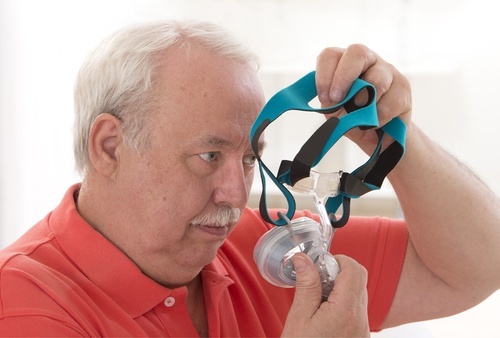 You used CPAP (continuous positive airway pressure) in the past but stopped using it. Now you want to start using it again. Congratulations on choosing to become healthier.
You used CPAP (continuous positive airway pressure) in the past but stopped using it. Now you want to start using it again. Congratulations on choosing to become healthier.
Even though CPAP is your friend, it may have felt like your enemy. Climbing into bed, exhausted after another stressful day, you are faced with this thing you have to put on your face and deal with all night. But you know it can help you. How do you get started again?
Ask yourself why you stopped using CPAP in the past. Write down your reasons. Having a list will help if you need to contact your sleep specialist.
Common Reasons for Quitting CPAP
Here are several reasons why people stop using CPAP. Troubleshooting and fixing the problem may get you using CPAP again and getting well.
The mask is n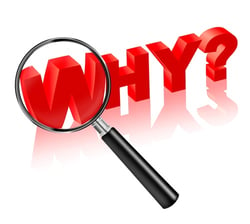 ot comfortable, does not fit correctly, or it leaks.
ot comfortable, does not fit correctly, or it leaks.
The mask causes you to have claustrophobia.
The air pressure is too low and you feel like you are oxygen starved.
The pressure is too high and it is hard to breathe against when you are trying to go to sleep.
Your nasal passages get dried out and/or congested.
The CPAP gives you gas or bloating.
You have been using CPAP diligently for months, but you are still snoring at night, or tired or sleepy during the day.
Here are solutions to these common problems.
The Mask
There are many different types and designs of masks. In an effort to help patients be more compliant, equipment manufacturers are forever designing new and improved masks that provide comfort and efficiency for sleep apnea treatment.
There are basically three types of masks: Nasal masks, nasal pillows (prongs) and full-face masks. Masks are designed to fit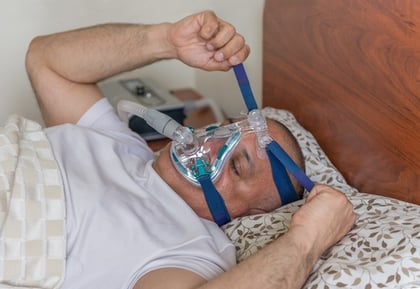 the patient’s particular characteristics: shape of the face, size of the nostrils, facial hair, mouth breathing, claustrophobic, personal preference, etc. Each type has its own advantages and disadvantages.
the patient’s particular characteristics: shape of the face, size of the nostrils, facial hair, mouth breathing, claustrophobic, personal preference, etc. Each type has its own advantages and disadvantages.
Since mask discomfort is the main reason why most people stop using CPAP, your durable medical equipment (DME) company will be happy to work with you to find the most appropriate and most comfortable mask for you.
Overtightening—Big Mistake!
One of the biggest mistakes patients make when adjusting a mask is to overtighten the mask. The mask is designed to sit lightly on the face. When patients have leaks, they have a tendency to tighten the straps on the mask until the mask is pressed tightly against their face. A really tight-fitting mask will actually cause a larger leak.
Claustrophobia
Some people get claustrophobic when the mask is on their face. Nasal pillows are ideal for people with claustrophobia.
A technique you can use to overcome your claustrophobia is desensitization. Begin wearing just the mask (no hose or machine attached) while you are doing something distracting, such as watching TV or working around the house. Begin with a few minutes and gradually increase the time. The idea is to get so used to the mask that you are not bothered by it.
Air Pressure
A sleep specialist has prescribed a particular air pressure for you. The amount of this pressure keeps your airway open while you sleep and eliminates all apneas, hypopneas, respiratory-effort related arousals, and snoring.
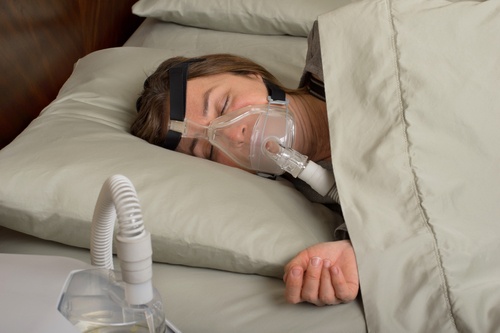 Each CPAP machine is programmed with the patient’s ideal pressure, like the dosage of a prescription. So your CPAP is specifically programmed for you.
Each CPAP machine is programmed with the patient’s ideal pressure, like the dosage of a prescription. So your CPAP is specifically programmed for you.
If you are using someone else’s machine because your machine is not working, was lost, etc., it is best for you to have your machine replaced or repaired rather than use someone else’s machine—their machine may have a different pressure than you require.
For some people, air pressure can be very high, and it may be difficult to breathe out against the air. CPAP machines have a ramp feature which reduces the amount of prescribed air pressure when the machine is first turned on. The pressure gradually increases over a designated period of minutes until it gets to the prescribed pressure—by that time, the patient is asleep.
Nasal Dryness and Congestion
The pressurized air coming into the nose can cause dryness and congestion. CPAP machines are designed to have humidifiers attached to them. A humidifier allows the air to be warmed before it enters the nose, decreasing the dryness that is caused by the turbulent air pressure. However, a corticosteroid may be necessary for nasal congestion also.
Aerophagia / Gas / Bloating
Aerophagia is the excessive swallowing of air. High CPAP air pressure can force excessive amounts of air through the esophagus into the stomach. Aerophagia occurs when the patient uses multiple pillows or one very large pillow.
A remedy for aerophagia, and resulting gas, bloating, and flatulence, is to use a chinstrap to keep from breathing through the mouth and/or sleep with one standard size pillow.
Other Situations
If the above situations and remedies do not apply to you, there may be other situations that caused you discomfort and, as a result, you quit using CPAP. Those situations may be: too high a pressure to begin with, your CPAP filters need cleaning or replacing, your equipment is worn, you have lost or gained a significant amount of weight and the pressure prescribed is no longer appropriate, you are not allowing enou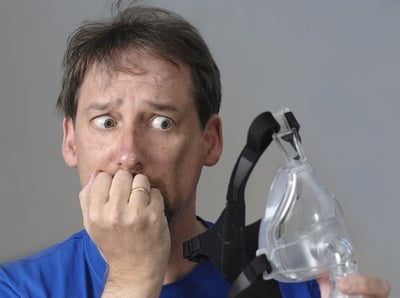 gh time to get an adequate amount of sleep, you grew a beard, and a myriad of other situations.
gh time to get an adequate amount of sleep, you grew a beard, and a myriad of other situations.
If you have been a diligent user of CPAP for a few months or years and you are not getting good sleep, a talk with your DME provider or sleep specialist is recommended—they are there to help you.
They will be able to discuss your attempts to use CPAP, the problems you have encountered, the continuing difficulties you are having, and your nightly routine in handling CPAP and sleeping with it. After discussing your situation in detail, sleep specialists will be able to pinpoint what is causing your distress and help you resolve the situation.
Success
There is always an adjustment period which is unique for each individual. Just like beginning a medication, it takes time for your body to get used to treatment. It may take from a few days to a few months to become comfortable with CPAP.
Keeping in mind the reason you want to start using CPAP again can be a motivator to treat your sleep apnea and improve your health. Did something happen to make you stop using CPAP? Has your sleep apnea gotten worse? Has another medical conditions associated with sleep apnea developed or gotten worse? Or are you just sick and tired of being sick and tired?
Goal setting is a good way to get accustomed to therapy. Set goals for yourself. If you are having difficulty adjusting, start with a few hours per night, then add additional time over the coming days and weeks, until you are using the device all night. Your DME provider can work with you on adjusting to therapy.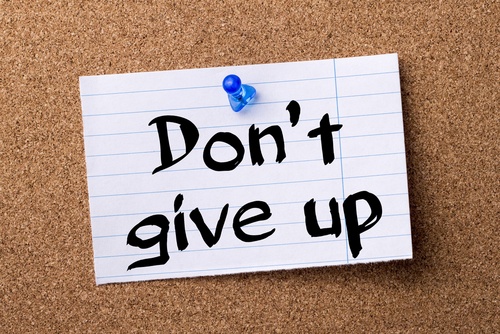
According to Dr. M.H. Sanders, a leading sleep physician, “Patients must actively participate in their own treatment or CPAP will not provide effective therapy.”
Successful treatment requires willingness, patience, commitment and responsibility. Ask for help. Keep trying. Don’t give up.
Sources:
Aerophagia, Sleep Review Magazine, Oct 2, 2010
National Sleep Foundation, www.sleepfoundation.org
Sanders MH. Medical therapy for obstructive sleep apnea—hypopnea syndrome. In: Kryger M, Roth T, Dement W, eds. Principles and Practice of Sleep Medicine. 3rd ed. Philadelphia: WB Saunders; 2000:879-893
Image Credits: www.shutterstock.com









Leave a comment